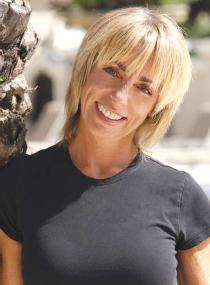Health & Fitness
Component II – Cardiovascular Fitness
by Cheryl Alker
In our November issue of Around Wellington, we discussed the five components of physical fitness and gave you some great advice on the benefits and how to achieve flexibility. This month we are dissecting the intricacies of cardiovascular fitness.
First of all, what is it? Well, the definition of cardiovascular or cardiorespiratory fitness is the efficiency of the heart, lungs and vascular system in delivering oxygen to the working muscle tissues so that prolonged physical work can be maintained. A person’s ability to deliver oxygen to the working muscles is affected by many physiological parameters, including heart rate, stroke volume, cardiac output and maximal oxygen consumption.
Simply put, it means that when you start to walk, run, cycle or swim, how efficient are your lungs at taking in oxygen? Delivering it to the heart (via your blood)? And then pumping it around the body to the working muscles?
Efficient distribution of oxygen is vital to the length of time you can continue your cardio workout. Lack of oxygen leads to fatigue and muscle soreness.
How do you know if you are working at a level where you can maintain that vital supply of oxygen?
A simple calculation will give you your answer:
· Take your age.
· Subtract this amount from 220 (the approximate amount our heart beats in one minute at birth).
· Take 50% and 85% of this figure.
This is your training zone; and for efficient fat burning cardiovascular training, you should keep your heart rate between these two figures. Towards the lower (50% – 65%) if you are beginning your training and fairly new to exercise and moving towards the higher (70% – 85%) as you body starts to adapt to your training program.
For example, if you are 40 years of age:
220 – 40 = 180
50% of 180 = 90
85% of 180 = 153
Your training zone is, therefore, between 90 and 153 beats per minute.
If you are using a piece of gym equipment for your cardiovascular training, you can easily monitor your heart rate by placing your thumb on the pad provided. If not, investing in a heart rate monitor that you strap to your chest whilst exercising will keep you on track; of course, you can do it the old-fashioned way. Take your own pulse at the wrist, arm or neck over a six-second period and add a zero or over a ten-second period and multiply by six.
How often should you train? Guidelines indicate between three to five times per week. If possible, vary your cardiovascular training. Working continually on the same piece of equipment or only running, cycling or swimming can seriously increase your risk of an overuse injury.
How long should your session last? Individuals with lower fitness levels should aim to maintain their heart rate within their target heart rate zone for a minimum of 20-30 minutes. This can increase to as much as 45-60 minutes as fitness levels increase.
Beyond the 45-60 minute mark there are diminished returns. For all that extra effort, the associated benefits are minimal.
This also applies to many athletes. Beyond a certain point they run the risk of overtraining and injury. There are exceptions; however, typically the ultra-long-distance endurance athletes.
When will I see results? In terms of the duration of the program as a whole, research suggests a minimum of six weeks is required to see noticeable improvement and as much as a year or more before a peak in fitness is reached.
So there you have it, everything you need to know to ensure a safe and effective fat-burning cardiovascular program. Now all that’s left is for you to JUST DO IT!
Cheryl Alker specializes in flexibility training, core strength and postural alignment, working with a select clientele across Palm Beach County. Her company, Stretch Results International, certifies health professionals in her results-based stretching program, educates consumers through public speaking and offers private or class consultations to clients who wish to lose their muscular pain and gain flexibility to achieve full and active lifestyles. For more information, please call Cheryl at (561) 889-3738 or visit www.stretchresults.com.

